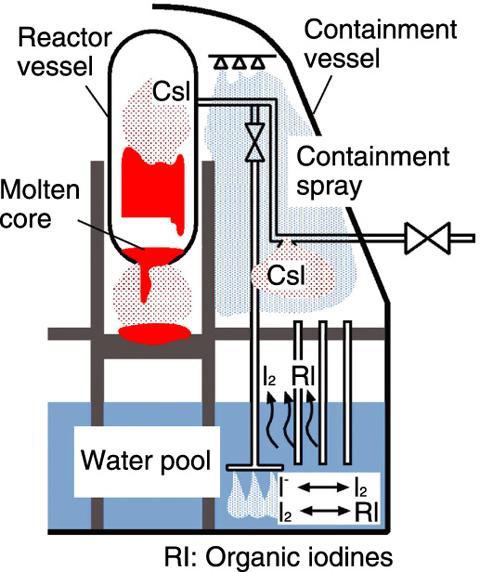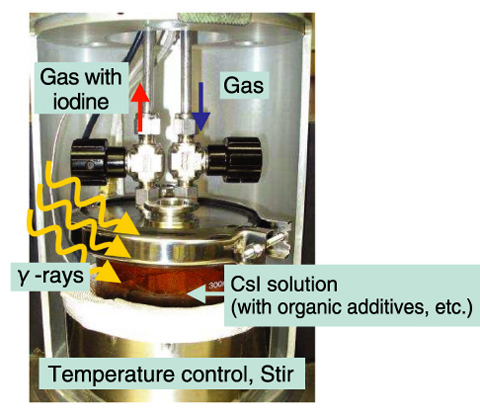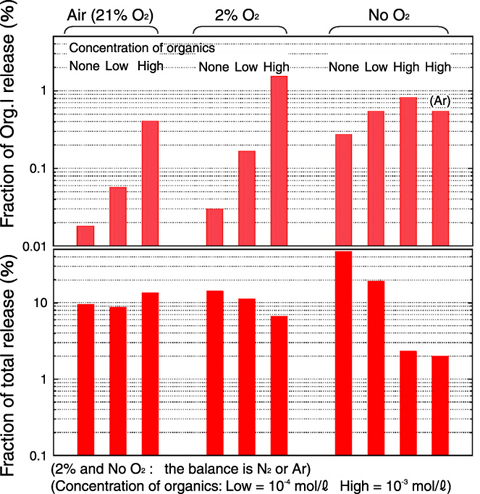
Fig.6-15 Iodine release during a severe accident

Fig.6-16 Iodine release experiment

Fig.6-17 Experimental results on the influence of organic impurity and oxygen concentration
The safety of a nuclear power plant means that its risk to the public is adequately managed. If severe core damage occurs, the radioactives in the core may be released into the environment. What kinds of radioactives they are, and how much of them there are, are important factors in evaluating the public risk.
Among such radioactives, iodine can become volatile and is easily released, and also has strong biological impacts. Thus it is regarded as most important in terms of heath consequences. The iodine accumulated in the containment atmosphere is important, because it is released into the environment if the containment fails.
Iodine is likely to be transferred into the containment mostly as cesium iodide (CsI), which is readily absorbed in water. It is, however, partially converted into volatile I2 and organic iodines by chemical reactions under strong radiation in the containment in accident conditions (Fig.6-15). The organic iodines are produced by reactions between iodine and organic compounds such as solvents leaching from the wall paint. Methyl iodide is a highly volatile kind and is relatively inert; it is not trapped and easily released.
We conducted experiments on such volatile iodine release by radiation chemical reactions. As shown in Fig.6-16, we prepared CsI solution in a vessel with various additives relevant to the containment environment, irradiated it, and measured the iodine release fractions. The cover gas in the vessel was swept and the gaseous iodine was transferred downstream, where iodine was trapped by filters. The percentages released as I2 or organic iodines were measured by this method.
Fig.6-17 compares the results of experiments with an organic additive, methyl isobutyl ketone (MIBK), which is a kind of thinner that is retained in the wall paint, and various oxygen concentrations in the sweeping gas. Data on the influence of the concentrations of organics and oxygen on iodine release were obtained through this experiment. This is useful for improving chemical reaction models and for reducing uncertainties in the evaluation of iodine release fractions in severe accidents.
This is part of a contract research program funded by the Japan Nuclear Energy Safety Organization (JNES).